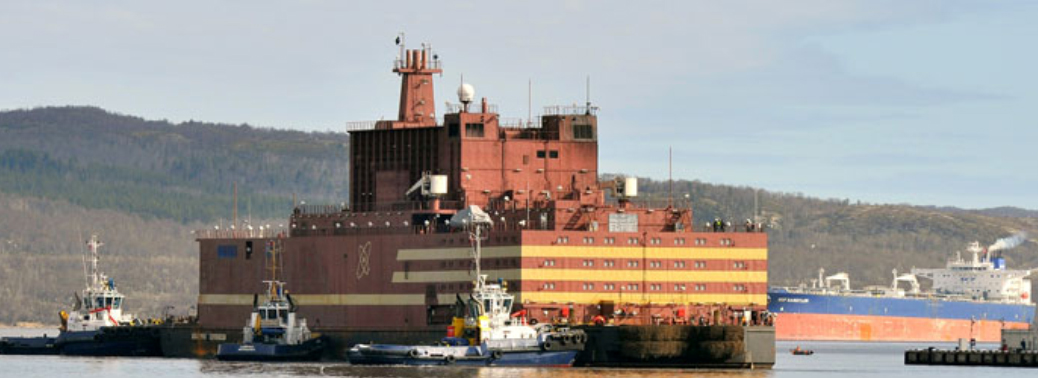AKADEMIK LOMONOSOV- RUSSIA’S FLOATING NUCLEAR POWER PLANT
18, Sep 2019

Prelims level : Environment- Disaster Management
Mains level : GS-III- Conservation, Environmental Pollution and Degradation, Environmental Impact Assessment.
Why in News?
- Recently Russian-built floating nuclear power plant completed its 5,000-km journey along the Northern Sea Route, causing excitement in the energy sector, but sparking fears among environmentalists over the safety of the Arctic region. The ‘Akademik Lomonosov’, is the first such plant to be built in the world.
About Akademik Lomonosov:
- The Akademik Lomonosov is a first-of-its-kind floating nuclear power station built in St Petersburg, the Russian port city on the Gulf of Finland. Three tugboats pulled it from the northern port of Murmansk for 5,000 kilometres to Chukotka, in Russia’s far east.
- Named after the 18th-century Russian scientist Mikhail Lomonosov, the 21,000-tonne floating plant is 144 m long and 30 m wide, and contains two nuclear reactors of 35 MW each. It is a small plant compared to conventional land-based nuclear projects.
- Run by the state-owned nuclear energy corporation Rosatom, the Akademik Lomonosov is expected to have a working life of 40 years which can be expanded to 50 years.
- According to Rosatom, the Akademik Lomonosov is part of a larger plan to provide energy to remote regions in Russia and around the world.
- It said that floating nuclear units could be particularly beneficial to island nations and can be used to power desalination plants for countries with a shortage of fresh water.
- The company has also said that, because many remote areas rely on coal-burning plants, the portable nuclear plants will help to reduce emissions of carbon dioxide, a greenhouse gas that contributes to climate change.
Concerns of Disaster:
- The environmental group Greenpeace has called the plan “Chernobyl on Ice”, referring to the1986 nuclear power plant meltdown, which released large levels of radiation into the atmosphere, forced thousands to flee their homes and sparked long-term fears of health and environmental repercussions.
- Activists fear that any accident aboard the plant could cause great damage to the fragile Arctic region. A recent nuclear accident in Russia after which there was a brief spike in radiation levels has added to the fears.
- The radiation fallout from the Fukushima nuclear disaster in Japan is also cited as a reason to not rush into such projects.
- The launch is part of a wider ambition of Russian President Vladimir Putin to develop the Northern Arctic region. That desire has become more realistic in recent years with global warming and melting ice caps making some areas more accessible.
- Critics have pointed to past incidents involving nuclear sea vessels, including the sinking of the gargantuan Kursk Submarine in 2000 and the leaking of radiation by a Russian icebreaker off the coast of Siberia in 2011.
Conclusion:
- The incident-ridden history of Russian nuclear icebreakers and submarines shows the need for strict, independent oversight with international peer review.
- This must start now, before the reactors are loaded, and span the plant’s entire risky operation – including transport, decommissioning and waste management.






